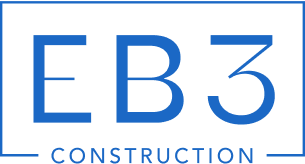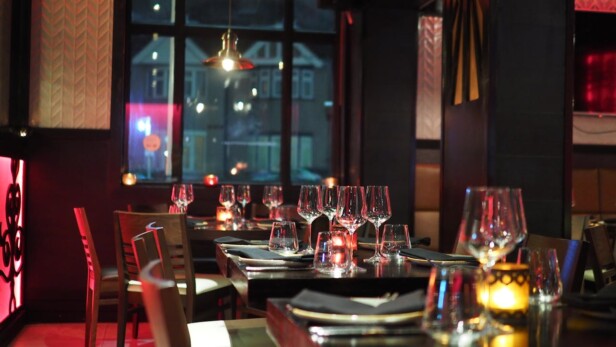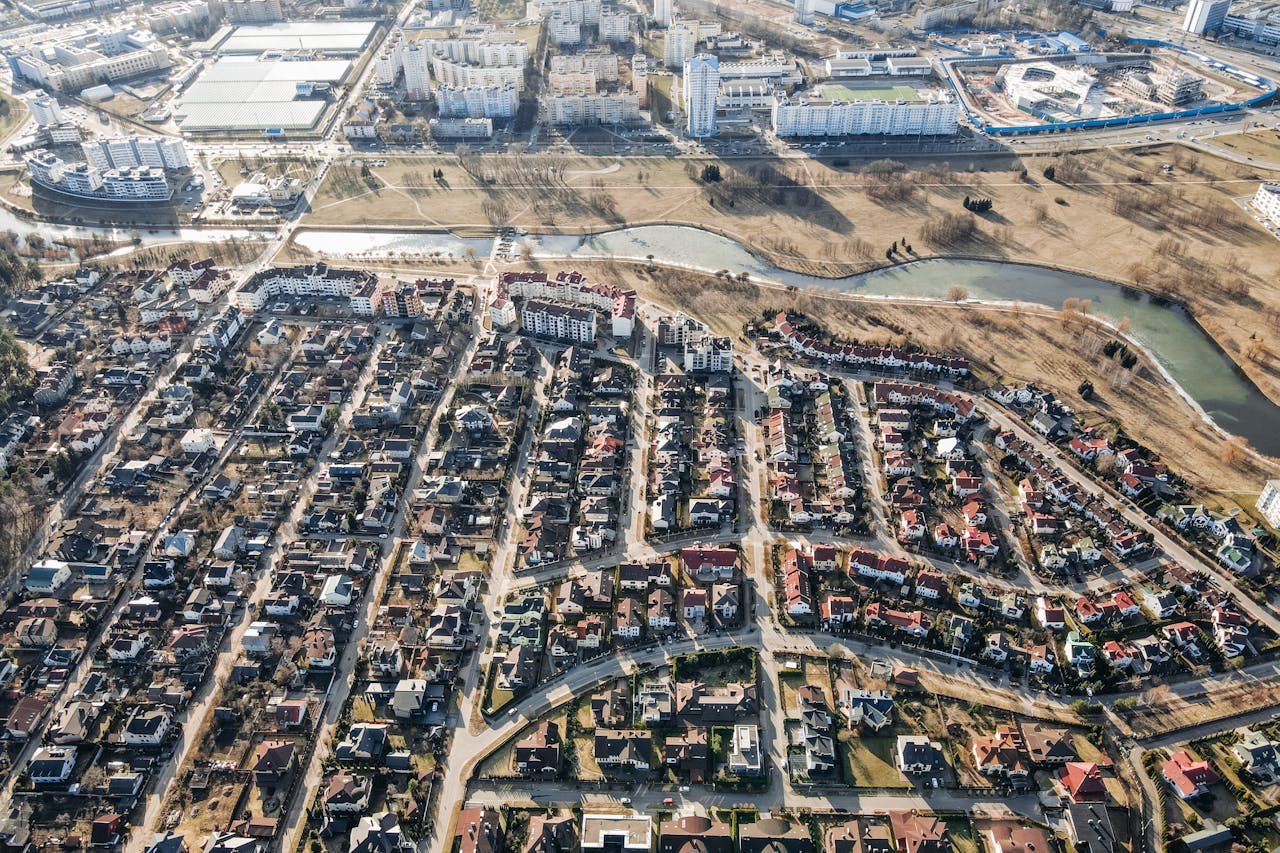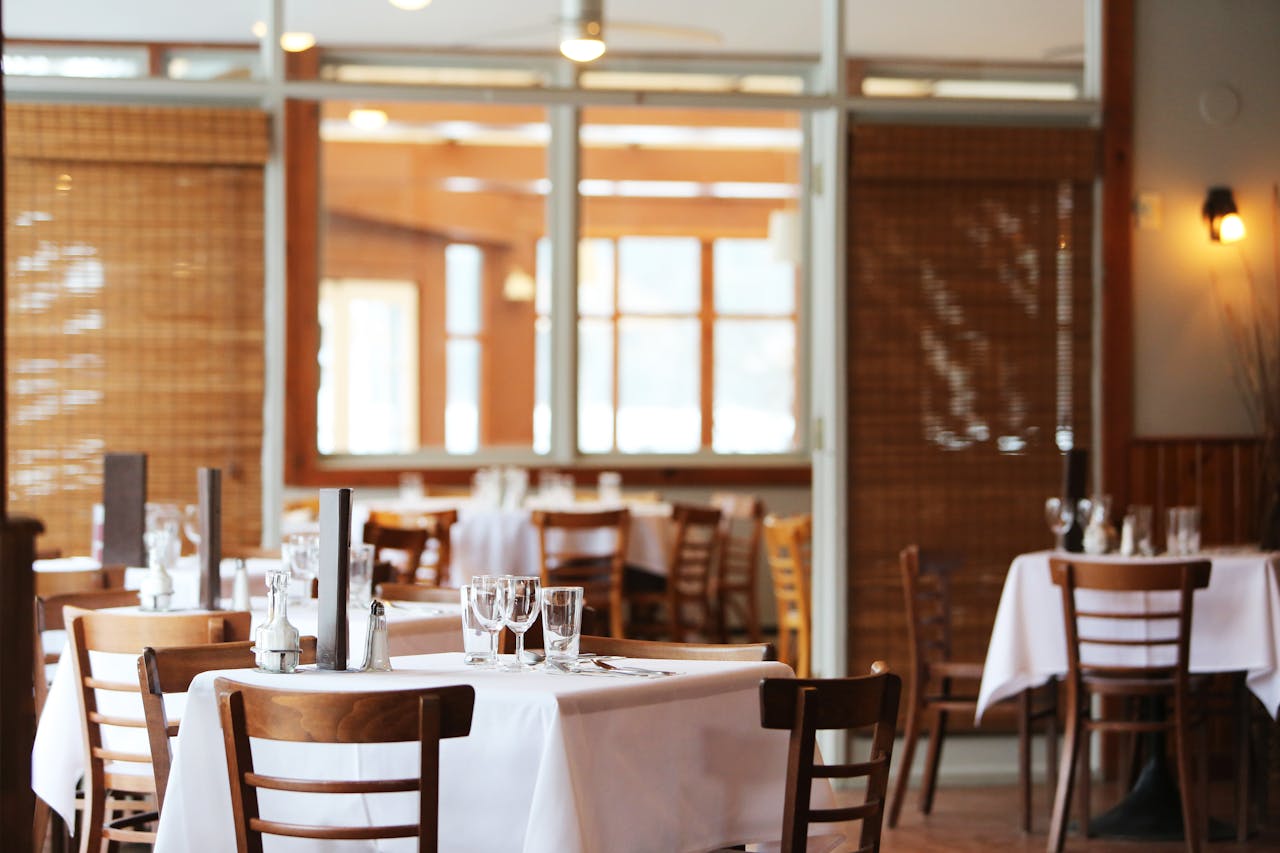Fine dining restaurant construction in Dallas demands precision execution across every detail. The success of upscale establishments hinges on creating spaces that deliver both visual sophistication and operational excellence through coordinated construction management.
We manage projects that blend refined front-of-house aesthetics with efficient back-of-house systems through comprehensive pre-construction planning, permitting coordination, and quality assurance protocols. Whether handling ground-up construction, tenant finish-out work, or complete remodels, our scheduling and project oversight ensure compliance with Dallas building standards while maintaining the timeline needed for successful restaurant openings.
Which Codes, Permits, And Standards Shape Dallas Fine Dining Builds?

Dallas restaurant projects operate under a complex web of local, state, and federal requirements that govern everything from structural integrity to accessibility. Building permits through the Sustainable Development & Construction office form the foundation, while the Consumer Health Division oversees food service permits that ensure commercial kitchen safety standards. We coordinate these parallel approval processes to prevent delays that can derail project schedules.
The Dallas Food and Drug Code Chapter 17 establishes comprehensive construction standards for commercial food establishments. Projects require detailed floor plans showing fixture layouts, equipment placement, and drainage systems before any construction begins. We work with city inspectors early to address requirements like grease trap sizing, ventilation hood specifications, and proper floor grading to trapped drains.
Building And Electrical Code Compliance
Commercial restaurant construction in Dallas must meet International Building Code standards adapted for local conditions. Structural requirements cover everything from load-bearing calculations for heavy commercial equipment to fire-rated assemblies between kitchen and dining areas. Building Inspection Division reviews plans for code compliance with established timeframes that vary by project complexity.
Electrical systems require separate permitting and inspection phases. Commercial kitchens demand substantial electrical loads for equipment like walk-in coolers, dishwashers, and cooking surfaces. We coordinate with electrical contractors to ensure proper circuit sizing, GFCI protection in wet areas, and emergency lighting systems that meet both operational needs and safety codes.
ADA Accessibility Requirements
The Americans with Disabilities Act creates specific obligations for restaurant accessibility that extend far beyond basic entrance requirements. Seating areas must provide accessible routes with minimum 36-inch clearances between tables. Restroom accessibility requires proper turning space, grab bar placement, and fixtures at compliant heights.
Service counters and dining surfaces need accommodation for wheelchair access, typically requiring sections with maximum 36-inch heights and proper knee clearance. We plan these features during design development to avoid costly retrofits during construction. Parking areas must provide accessible spaces with proper signage and access aisles connecting to accessible building entrances.
Health Department Standards And Inspections
The Consumer Health Division requires Food Establishment Permits before construction begins, creating a coordination point between health and building departments. Chapter 17 Food and Drug Code governs construction materials, surface finishes, and equipment specifications throughout food preparation areas. Floor surfaces require smooth, easily cleanable materials like sealed concrete or ceramic tile, graded to trapped floor drains.
Commercial equipment must meet National Sanitation Foundation standards and mount on six-inch bullet legs or sealed floor connections. We schedule health inspections alongside building inspections to maintain project momentum while ensuring all regulatory touchpoints receive proper documentation and approval.
LEED And Sustainability Standards
Fine dining projects increasingly pursue Leadership in Energy and Environmental Design certification through the U.S. Green Building Council. LEED requirements address site selection, water efficiency, energy performance, and indoor environmental quality. These voluntary standards often align with operational cost savings through reduced utility consumption and improved indoor air quality.
Sustainable materials selection, waste management during construction, and energy-efficient mechanical systems contribute to LEED point accumulation. We integrate sustainability planning with code compliance to avoid conflicts between green building goals and regulatory requirements. Projects pursuing LEED certification require additional documentation and commissioning processes that we coordinate alongside standard permitting workflows.
What Is The Typical Process From Vision To Opening?
Fine dining restaurant construction follows a structured sequence where each phase builds on the previous one. We approach these projects systematically to prevent delays, cost overruns, and compliance issues that can derail timelines.
Feasibility Studies And Site Analysis
We start every project with comprehensive feasibility studies to validate the restaurant concept against site realities. This analysis examines utility capacity, zoning restrictions, and structural limitations that could impact fine dining operations. Site selection involves evaluating foot traffic patterns, parking availability, and neighborhood demographics to ensure alignment with the target clientele.
Utility assessments focus on electrical capacity for commercial kitchen equipment, water pressure for dishwashing systems, and gas lines for cooking equipment. We also evaluate HVAC requirements for maintaining comfortable dining temperatures while managing kitchen heat loads. These early evaluations prevent costly discoveries during construction that could require design changes or infrastructure upgrades.
Pre-Construction Planning Phase
Cost estimation and budgeting form the foundation of successful restaurant projects. We develop detailed budgets that account for both predictable costs and contingencies specific to restaurant construction. Schedule development considers permit approval timelines, equipment lead times, and coordination requirements between multiple trades working in tight quarters.
Risk planning addresses potential challenges unique to restaurant construction, such as equipment delivery delays, specialized trade scheduling conflicts, and inspection requirements. We establish clear communication protocols and milestone tracking to maintain project oversight throughout the construction process. This planning phase typically takes four to six weeks but saves significant time and money during execution.
Permitting And Code Compliance
Addressing building and electrical codes early prevents field work delays and costly corrections. We coordinate with local authorities to secure permits for structural modifications, electrical upgrades, and plumbing installations required for commercial kitchen operations. ADA compliance planning ensures accessible routes, appropriate seating layouts, and compliant restroom facilities.
Fire safety permits cover kitchen suppression systems, exit requirements, and occupancy loads specific to restaurant operations. Health department approvals address food preparation areas, storage requirements, and sanitation systems. We submit comprehensive documentation packages that anticipate inspector questions and demonstrate code compliance before breaking ground.
Construction Delivery Methods
Construction delivery varies based on project scope and existing conditions. Ground-up builds offer maximum design flexibility but require longer timelines and higher investment. Tenant improvements work within existing structures, focusing on interior modifications and MEP system upgrades to support restaurant operations.
Remodel projects balance preservation of existing elements with necessary updates for code compliance and operational efficiency. We manage scope and schedule by sequencing work to minimize disruptions and maintain clear pathways for equipment installation. Regular progress updates keep owners informed of milestone achievements and any schedule adjustments needed to maintain opening targets.
Interior Detailing And Finishes
Interior detailing transforms construction spaces into refined dining environments. Flooring selection balances durability requirements with aesthetic goals, often incorporating materials that handle heavy foot traffic while maintaining elegant appearance. Lighting design creates layered illumination that enhances dining ambiance while providing adequate task lighting for service staff.
Drywall and paint systems provide the backdrop for brand expression through color schemes and texture applications. Brand-aligned finishes include custom millwork, decorative elements, and architectural details that reinforce the restaurant’s concept and market positioning. We coordinate these installations to prevent damage from subsequent trades and ensure quality outcomes.
Commercial Kitchen Equipment Installation
Kitchen layout optimization ensures efficient workflow between preparation, cooking, and service areas. Equipment fit involves precise measurements and coordination with MEP systems to support power, water, and ventilation requirements. We sequence installations to allow for equipment testing and commissioning before final inspections.
MEP coordination ensures electrical panels can handle commercial equipment loads, plumbing systems support dishwashing and food preparation needs, and ventilation systems maintain proper air quality and temperature control. Equipment integration includes connecting gas lines, electrical circuits, and water supplies according to manufacturer specifications and local codes.
Quality Assurance And Project Turnover
Ongoing inspections occur throughout construction to identify and resolve issues before they impact project completion. Punch lists document final corrections needed to meet construction standards and owner expectations. We coordinate these items systematically to avoid delays in certificate of occupancy approval.
Turnover readiness includes completing all required testing, obtaining final inspections, and delivering documentation packages that support ongoing operations and maintenance. We provide comprehensive project closeout materials including warranties, operation manuals, and maintenance schedules for installed systems and equipment.
How Do Design, Materials, And Systems Support A Fine Dining Experience?
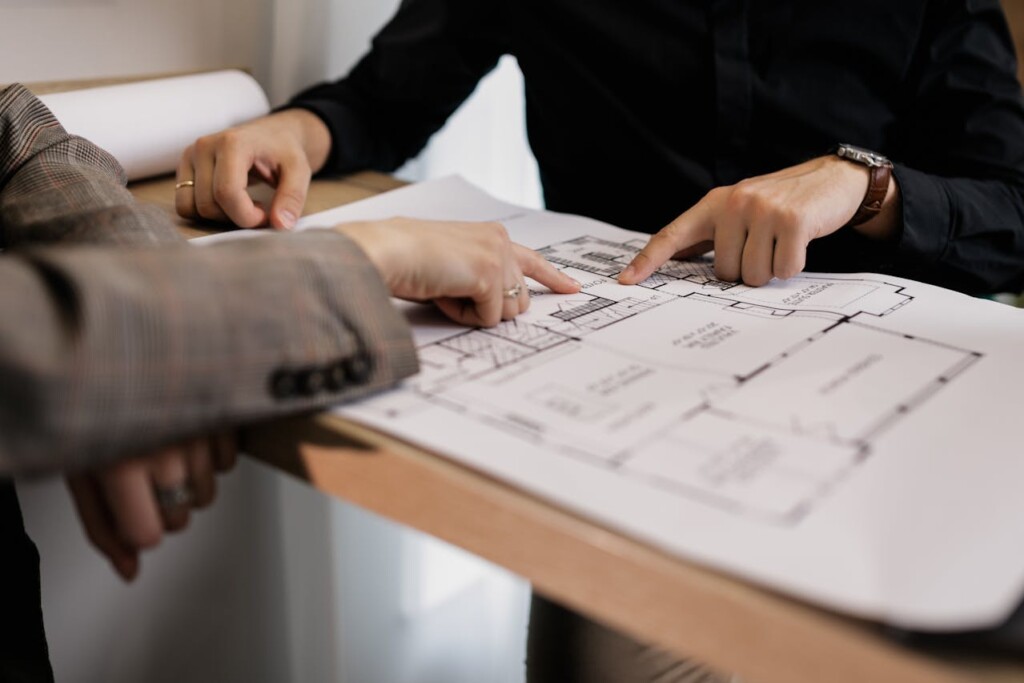
Fine dining construction requires careful integration between front-of-house aesthetics and back-of-house functionality. We coordinate these elements from the earliest design phases, ensuring that sophisticated guest experiences are supported by efficient kitchen operations. The interplay between these spaces determines whether a restaurant can deliver both visual appeal and consistent service quality.
Front-Of-House Design Elements
Refined finishes establish the foundation for fine dining ambiance. Custom millwork creates architectural interest through detailed moldings, built-in wine storage, and handcrafted bar elements that reflect the restaurant’s brand identity. We specify premium materials like natural stone countertops, hardwood floors, and fabric wall coverings that convey luxury while maintaining durability under commercial use.
Layered lighting design shapes the dining atmosphere throughout service periods. Warm LED fixtures (2700K-3000K) create intimate settings, while dimmable controls allow adjustment from bright lunch service to romantic dinner ambiance. Statement chandeliers serve as focal points, complemented by accent lighting that highlights artwork and architectural features.
Flooring and wall treatments anchor the visual experience. We select materials that balance aesthetics with practical concerns like slip resistance and maintenance requirements. Large windows frame Dallas skyline views, becoming natural design elements that connect diners to the city’s energy. Wood-paneled details add warmth and texture, creating intimate zones within larger dining spaces.
Back-Of-House Performance Systems
Efficient kitchen zones support the precise timing fine dining requires. We design cooking stations that allow chefs to work without interference, with clear sightlines between preparation areas and expediting stations. Equipment placement follows workflow principles, minimizing steps between storage, prep, cooking, and plating areas.
Proper ventilation systems remove heat and odors while maintaining comfortable temperatures for kitchen staff. We coordinate ventilation design with ceiling heights and equipment loads, ensuring adequate air changes without creating uncomfortable drafts. Seamless equipment installation integrates commercial-grade appliances with surrounding millwork and finishes.
Kitchen integration with MEP systems requires precise coordination during construction. We align electrical service with equipment requirements, coordinate gas lines for cooking equipment, and ensure plumbing serves both prep areas and dishwashing stations. This coordination prevents delays and ensures systems operate efficiently from opening day.
Coordinating FOH Aesthetics With BOH Performance
We align front-of-house design with back-of-house operations through integrated floor planning. Open kitchen concepts require careful ventilation design to prevent cooking odors from affecting dining areas. Service corridors connect kitchen and dining spaces efficiently while maintaining the desired level of separation.
Lighting coordination extends from dining areas into service zones and kitchen spaces. We ensure adequate task lighting for food preparation while maintaining design continuity in areas visible to guests. Brand consistency appears in material selections, color palettes, and fixture choices that connect public and service areas.
Outdoor lighting enhances guest access while supporting evening operations. We design entrance lighting that welcomes diners, patio lighting for outdoor seating areas, and service area lighting that doesn’t interfere with the dining ambiance. These systems integrate with building security and create safe pathways for both guests and staff.
How Should Owners Evaluate And Select A Dallas Contractor?
Selecting the right contractor for your Dallas fine dining project requires systematic evaluation across seven critical areas. We’ve seen successful restaurant builds hinge on thorough vetting during the selection process, while rushed decisions often lead to costly delays and quality issues.
Validate Licenses And Request References
Start by verifying all contractor licenses with local boards and state authorities. Texas requires general contractor licenses for commercial construction, and Dallas County maintains public records for easy verification. Request references from recent restaurant projects, specifically fine dining establishments that required similar scope and complexity.
Contact at least three previous clients directly to discuss schedule adherence, budget management, and problem-solving capabilities. Ask about communication patterns during construction and how well the contractor handled unexpected issues. References should reflect work completed within the past two years to ensure current capabilities and market conditions.
Secure Competitive Bids With Full Scope Clarity
Gather at least three competitive bids to establish market pricing and identify potential red flags. Each proposal should detail the complete scope of work, including sitework preparation, structural modifications, MEP installations, and finish work. Pricing should break down by construction phase rather than providing lump-sum figures that obscure actual costs.
Schedule clarity becomes equally important for restaurant projects with tight opening deadlines. Bids must include realistic timelines for permitting, construction phases, equipment installation, and final inspections. We recommend requesting detailed project schedules that show trade coordination and critical path activities to assess feasibility.
Assess Restaurant Construction Experience
Look for demonstrated experience across ground-up construction, tenant finish-out work, and restaurant remodels. Fine dining projects demand specialized knowledge of commercial kitchen requirements, front-of-house aesthetics, and operational workflow integration. Review portfolio examples that show similar project types, budgets, and complexity levels.
Experience with restaurant-specific challenges proves essential for successful delivery. This includes coordinating grease trap installations, commercial ventilation systems, specialized lighting requirements, and health department compliance throughout construction. Ask potential contractors to walk through their approach to kitchen-to-dining room coordination and equipment integration.
Confirm Permitting Knowledge And Code Experience
Dallas fine dining projects require extensive permitting coordination and code compliance expertise. Verify that potential contractors understand ADA accessibility requirements, electrical code standards for commercial kitchens, and health department regulations for food service construction. Documentation processes should include plan submission coordination and inspection scheduling management.
Contractors should demonstrate familiarity with Dallas permitting timelines and requirements for restaurant construction. This includes understanding when to submit applications, which departments handle different approval types, and how to coordinate multiple inspection phases without project delays.
Evaluate Pre-Construction Services
Strong pre-construction services separate capable contractors from basic builders. Assess their ability to provide feasibility studies, accurate cost estimation and budgeting, comprehensive schedule development, and value engineering options. These services help identify potential issues before construction begins and establish realistic project parameters.
Pre-construction planning should include site analysis for restaurant-specific needs, utility capacity verification, and constructability reviews for complex kitchen and dining layouts. We look for contractors who can provide multiple design alternatives and cost-benefit analyses for major decisions.
Review Technology And Reporting Capabilities
Modern construction projects require transparent communication and real-time project tracking. Evaluate each contractor’s technology platforms for daily progress updates, budget tracking, and change order management. Clear change tracking prevents disputes and keeps projects on schedule and within budget.
Reporting systems should provide regular updates on construction progress, upcoming milestones, and potential issues. We recommend contractors who use project management software that provides owners with direct access to schedules, photos, and budget status throughout construction.
Examine Subcontractor Relationships
Restaurant construction success depends heavily on trade coordination and subcontractor reliability. Ask about long-term relationships with electrical, plumbing, HVAC, and specialty restaurant contractors. Strong subcontractor networks help manage costs, maintain schedules, and ensure quality across all construction phases.
Evaluate how contractors manage subcontractor performance, handle trade conflicts, and coordinate complex installations like commercial kitchen equipment. The best general contractors maintain preferred vendor lists and can provide subcontractor references for specialized restaurant work. EB3 Construction maintains established relationships with Dallas-area trades who understand restaurant construction requirements and can deliver quality work within competitive timelines.
Conclusion And Next Steps

Fine dining restaurant construction in Dallas requires precise coordination between upscale design elements and operational efficiency. We focus on construction sequencing that ensures every phase builds toward a cohesive guest experience while maintaining code compliance and budget control. Quality assurance throughout the process prevents costly rework and delays that can impact opening schedules.
Start by clearly defining your concept and target guest experience before design development begins. Align interior finishes with your brand identity while planning for ADA compliance requirements and electrical code standards from day one. Gather competitive bids from contractors with restaurant-specific portfolios, ensuring each proposal includes complete scope definitions and realistic schedules. Look for teams that demonstrate strong permitting knowledge and established relationships with key suppliers and subcontractors to support efficient project delivery.
Ready to move your fine dining concept from vision to opening day? Contact EB3 Construction to discuss feasibility studies, permitting strategies, and construction approaches that deliver exceptional dining spaces.
